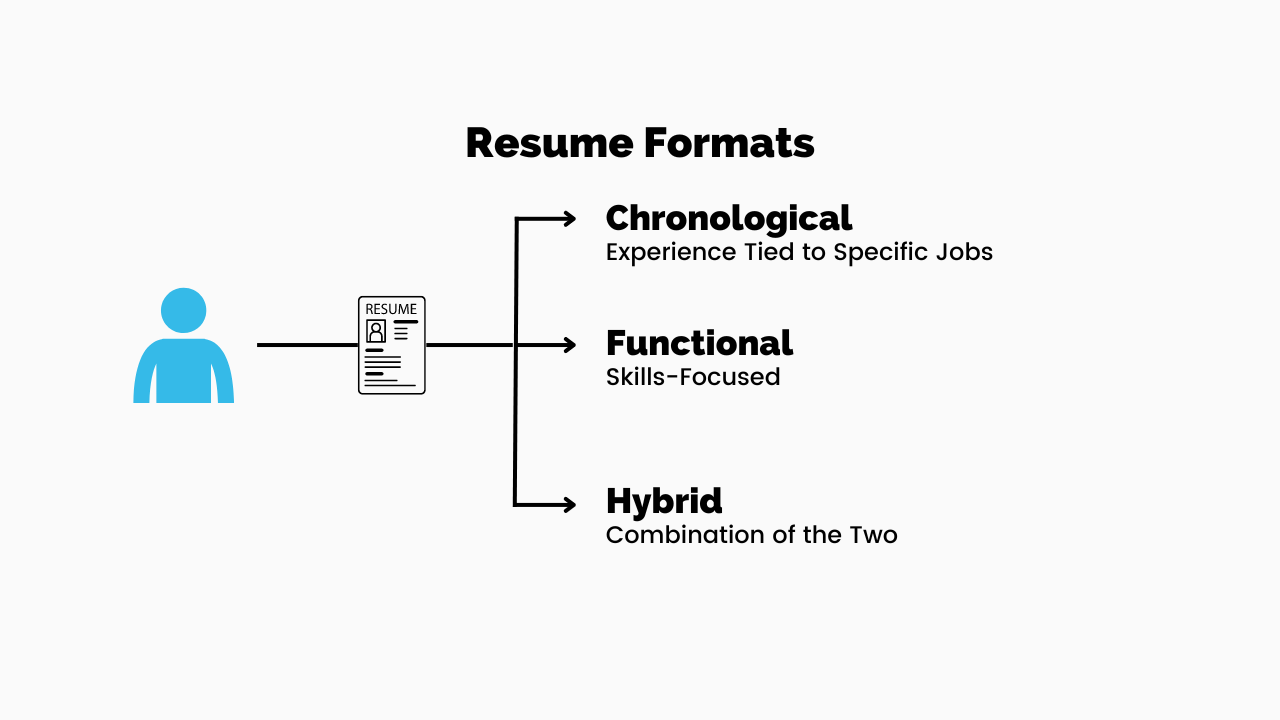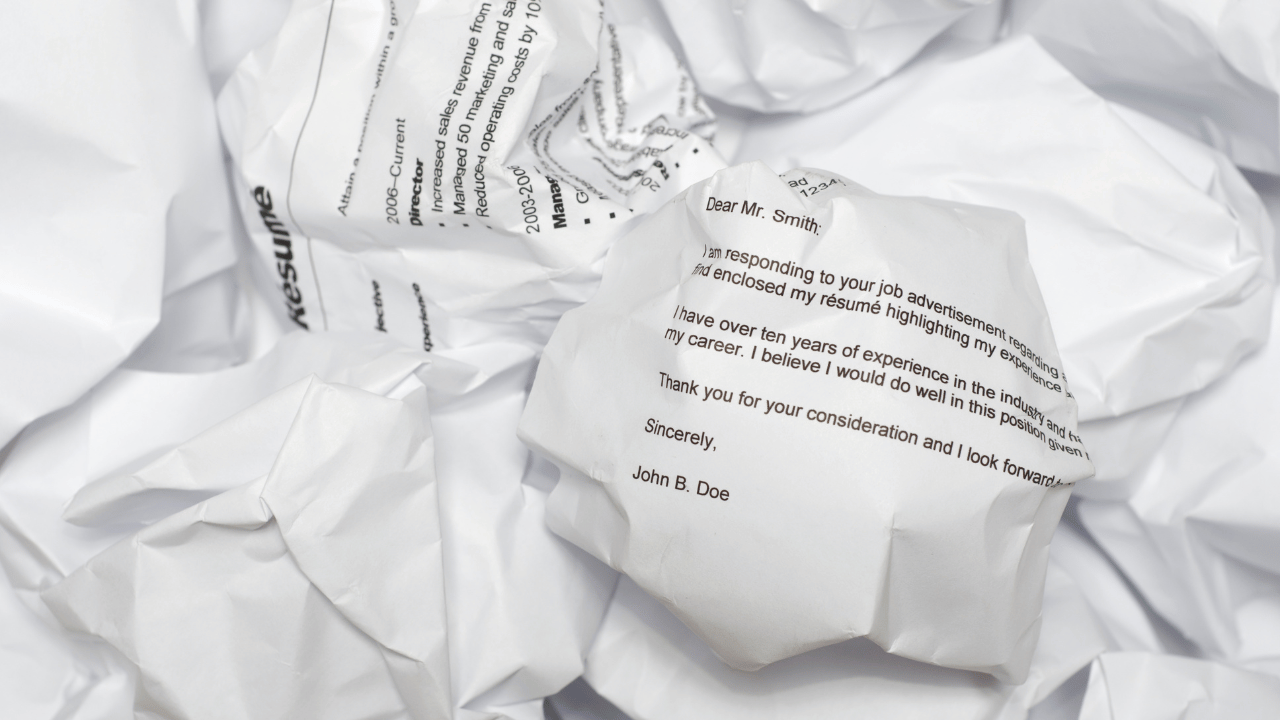How to Create A Master Resume [With Examples]
If you’ve been job searching for a while, you’ve probably heard the term “master resume” thrown around by resume writers, recruiters, and some of your peers. Today I’m going to tackle everything you need to know about a master resume because the truth is, you really need one. Let’s dive in.
Contents
What is a Master Resume?
Why Do I Need a Master Resume?
How Do I Write a Master Resume?
Master Resume Examples.
How Do I Use a Master Resume?
How Often Do I Update a Master Resume?
What is a Master Resume?
Most resume writers will tell you that a master resume is a comprehensive document that contains every detail of every experience you’ve ever had. You’ll list every skill, every experience, every degree and certification, and every job detail from your entire career.
By this definition, this type of resume is literally a documentary of your professional life. It’s only good for remembering things, like a notepad. It can’t be submitted to a job listing or even used as a template.
I’m going to admit, I have a slightly different take than my resume-writing colleagues about what a Master Resume should be. If you’ve read my Definitive Guide on Resume Writing, you know that I don’t promote documentary-style resumes. I see very little value in spending hours refining a resume that serves only as notes about your jobs and accomplishments.
The Segmented Master Resume
Everything in life has opportunity costs. Every minute we spend on one thing, takes away from something else. We want to know that the time we spend on a resume has the biggest return on our time spent. Here’s how I use master resumes so that they are usable on their own and help you tailor targeted resumes for particular jobs.
I build them for job segments.
For example, if you’ve worked for organizations as a Controller and HR Manager you have skills and experiences in two job segments. The first is accounting as a Controller. The second is human resources as an HR Manager. In fact, some of your jobs could have even combined the roles. It’s not uncommon in smaller organizations that the Controller is the HR Manager.
In this example, you may have two career paths that you are qualified for and wish to explore, HR and Management Accounting. I would write two master resumes - one focused on my Controller experiences and another focused on my HR experiences.
Now you may be thinking, won’t this take more time if I have to write two resumes? No. It’s the same information you would have written into one, but now focused in a way that you can use the master resume as a template and possibly even submit it to job openings without adaptation.
Essentially, the segmented master resume is a comprehensive document that contains every RELEVANT detail of your experiences as they relate to a particular category or segment of jobs.
This then acts as a reference point to build on or take away from as you target your resume for specific jobs.
Master Resume vs. Target Resume
What’s the difference between a master resume and a targeted resume? If you write a master resume as I suggest, then it will capture the qualifications and experiences needed for 80% of the jobs you find in your segment.
But naturally, every company is unique and has slightly different needs. Different companies may be in different growth places and so a target resume will be tailored to those unique nuances.
That doesn’t mean you can’t submit a segmented master resume for jobs though without tailoring. If done correctly, it should capture 80% of what you need to secure most interviews if you’ve segmented appropriately. I like to use segmented master resumes when applying to Tier 2 jobs, those jobs that I may be weaker on the qualifications or less interested in.
Another important point to remember is that even a segmented master resume may be longer than a targeted resume. When I write these resumes for clients, I like to load them with as much information because that makes it easy for the client to simply delete unnecessary information. Writing this way makes it very easy to tailor because you don’t usually have to write new resume content, but rather delete content that doesn’t fit the particular job.
Why Do You Need a Master Resume
Why write a master resume at all? I can think of many reasons, including saving you countless hours in resume drafting, but in this section, I’ll cover what I believe are the top three.
Benefits of a Master Resume
You don’t have to remember everything you did ten years ago.
If you’re like me, I barely remember what I ate for breakfast by noon, let alone what I worked on ten years ago at company X. Try remembering KPIs (key performance indicators) and details about your team and you’re probably at a loss for information. Capturing this information on a master resume, it will save you hours trying to remember information or chasing down old coworkers to ask them questions.
Makes it easier and faster to tailor resumes.
If you write a master resume the way I suggest, tailoring your resume into a targeted resume is quick and easy. All you have to do is delete the information that isn’t applicable to a particular job. While I don’t think you have to tailor a resume for every job, you probably want to do it for your Tier 1 job prospects - those jobs you’re most qualified for and most excited about.
You can apply for more jobs
Writing a master resume following my segment strategy will enable you to apply for more jobs. We can debate all day whether job hunting is a numbers game or not, but if I apply to 100 jobs with a good resume, I have a greater chance of securing an interview than the person who applies to 10 jobs with a great resume. It’s called the law of diminishing returns. If my master resume hits 80% of the qualifications found on the majority of jobs, that’s a good resume and I can use it in mass without tailoring it.
Paints a picture of how likely you can find a job in your desired field.
This one is important. Because most jobs in a segment have the same qualifications, a segmented master resume will already capture the right resume narrative for 80% of the jobs you find. As you examine job descriptions and talk to people, you’ll quickly discover whether or not you can write a master resume for the job segment you wish to work in. If you struggle to write relevant content for a master resume, it may be an indicator that you lack qualifications or industry experience which could mean that it will take you longer to find a job in that segment.
Should You Have a Master Resume
I think you have two choices. You can skip the master resume and write targeted resumes for every job you find. It will take you multiple hours per job you apply for to do this.
Or you can spend the time up front to write a segmented master resume which then makes tailoring your resume for each job easier. By spending five to ten hours writing a master resume, you can reduce your resume tailoring to under ten minutes per job you apply for.
For me, it’s a no-brainer. Write a master resume first.
How to Write a Master Resume
This section will cover everything you need to know about writing a master resume including my four-step process, formatting, and what sections to include. Let’s dive in.
The Basics of a Master Resume
Step 1 - Segmentation Analysis
A segmented master resume is designed to capture the relevant qualifications and experiences needed for 80% of the jobs you find in a particular job category. With that in mind, you need to have appropriate categories.
Before you begin writing, you have to find a segment or category of jobs that has enough overlap to write a master resume. For example, you’ll find that the overwhelming majority of customer success jobs will focus on adoption, utilization, business reviews, and retention (among other things). If you analyze a dozen job descriptions and find they have a lot of overlap in qualifications and desired experiences, then you know you can write a solid master resume for that category.
Action Step: Analyze 10+ job descriptions to determine if there is enough overlap to write a master resume.
Step 2 - Determine What Relevant Experiences, Skills, and Achievements Apply
Now that we have determined a job category to write our master resume, we need to figure out what content from our past applies to this job. Examine the job descriptions for commonalities. What do they all ask for in terms of experiences, skills, and abilities? What quantifiable achievements would support our claim that we are good at those tasks? You want to pack all the details you can into this resume so you can easily delete content later if you choose to tailor the resume for a particular job.
Action Step: Make a list of all the important job requirements and qualifications.
Step 3 - Inspect Your Career
Now that we know what we should write about, we need to go back in time and dig it up. Chances are you didn’t start writing your first master resume when you graduated from school so you’ll need to do some digging. Examine your career through different lenses. Talk to others about your career or hire a professional who can help you view your job experiences in different ways. You’ll be surprised how many of your job experiences translate to other jobs when you ask yourself the right questions.
Action Step: Examine your career to find relevant experiences and transferable skills.
Step 4 - Assemble Your Resume
Once you have all the content, start putting it together using my resume guide and my free resume templates.
Action Step: Download my free resume templates and access the resume guide.
Resume Sections to Include in Your Master Resume
Your master resume will include all the same sections as a targeted (or tailored) resume; however, it could include some additional sections. You can always delete the additional sections when and if you tailor the resume. It’s much easier to delete content than to write new content for each job.
These resume sections will be on your master and target resumes:
Contact Information
Resume Summary
Work Experience
Education
Technology
If you want to know more about these sections and what subtitles you could use, check out the article titled, 5 Resume Subtitles Your Resume Needs.
You may also want to include these resume sections in your master resume:
Volunteer Experience
Freelance Experience
Language Proficiencies
Publications
Clinical Experience
Professional Associations
Certifications
Projects
Advanced Training
Formatting a Master Resume
You want to format your master resume the same way that you would format your target resume. That will make it easier when you delete content from the master during resume tailoring for specific jobs.
If you’re going to tailor your resume in reverse chronological resume format, then write your master resume in reverse chronological format too.
Also determine upfront what font pairings, sizing, and margins you will use to keep everything consistent and professional.
If you’re not sure what resume format is best for you, my resume guide breaks it all down for you.
How Long Should a Master Resume Be?
Don’t worry about resume length when writing a master resume. The whole point is to capture as much relevant information as you can for the majority of the jobs you will encounter in your segment. You can delete irrelevant resume content later when you target it to a specific job.
Target resumes are usually two pages or less, but master resumes can be much longer. Ideal resume word count studies only apply to target resumes.
How Many Jobs Should You List on a Master Resume
Let your job research guide you on this. When you researched jobs in your segment, how many years of experience did they mention? If they all asked for seven years of leadership experience, then include the past seven years of leadership positions on your master resume. I recommend erring on the higher end. As I said before, you can always delete jobs off the end if you’re writing in chronological format.
What are Some Rules for Preparing a Master Resume
My first rule would be to add more information, not less, on a master resume. The whole point is that you can quickly delete irrelevant content before you apply to each job. If you do the work upfront, it will save you time later. Don’t add extra information for the sake of adding extra information, but if it could be relevant - include it.
Include all of the positions you’ve held at each company. You can always delete one’s that aren’t as relevant to a particular job later.
Don’t write too broad. Your segment has to be niche enough to write a useful master resume. One common mistake I see is when job seekers write a master resume that could be used for both leadership roles and individual contributor roles. Those are way too broad and require very different skills and experiences. You want your segment to be niche enough that your content will cover a majority of what employers are asking for.
Don’t be afraid of writing more than one master resume. It’s a lot easier to write a master resume for HR Management roles and for Accounting Manager roles and then tailor them after the fact. No one said you have to pick one segment and roll with it. If you’re like most people, you can do a handful of things well. Don’t be afraid of having multiple master resumes for different job segments that you can use during your job search.
Avoid generic language that uses resume cliches and buzzwords. Similar to a target resume, you want to write as clearly and specifically as you can so you don’t have to rewrite later.
Saving a Master Resume
I used to be terrible at organizing my resumes and this cost me a lot of time (plus added a lot of frustration to an already frustrating situation). Save your master resume as your name plus job segment plus master resume.
It could look like this: ColeSperry.HRManager.MasterResume.docx
This will help you find it later and help you remember to make a copy of it before editing it.
Always make a copy before editing it for a particular job. Then save that new file as your name and the job you used it for in case you need to reference it later.
Master Resume Examples
Let’s take a look at a master resume and I’ll point out some of the features and how to use it. Remember I don’t write a traditional master resume. I keep all that in bullet-point notes somewhere. This is a segmented master resume.
The first thing you’ll notice is that this document is three pages long. That’s longer than a targeted or tailored resume would be because I would condense this and eliminate irrelevant pieces.
You’ll also notice that I list every job I’ve had at each organization. On page one, you’ll see two jobs because I did two jobs during my time there. For my master resume I’m going to write about both of them, but when I target this, I may choose to eliminate the ambulatory administrator role altogether because it could distract from my qualifications as a chief nursing officer.
This resume also includes detailed experiences for the past twenty-three years. When I target this resume for a specific job, I may delete some of my older job experiences depending on what the hiring manager is looking for. But for a master resume, I want to include it all because it is easier to delete it than to try and rewrite it every time.
I hope seeing this and walking through some of the pieces helps you envision what your master resume could look like.
How to Use a Master Resume
I keep a Google document that has all the notes about all my jobs on it. It’s not the cleanest document, but it has every detail of my career in case I need to reference it later. This suffices for me instead of a traditional master resume.
I then write segmented master resumes for job categories that I could explore and use them to tailor my resumes when needed.
How to Customize a Resume From a Master Resume
When we talk about customizing a resume from a master resume, we’re really discussing how to condense it into a targeted or tailored resume for one specific job.
Adjust the Resume Narrative
The first thing I do to tailor a resume is identify themes. By talking to people in similar jobs and reading the job description, I can place qualifications and responsibilities into categories. I then condense those categories until I arrive at three or four themes.
Those themes can then be used to rewrite or adjust my resume summary. For a complete guide on how to write a resume summary, check out this guide that includes my resume formulas.
Be Ruthless About Deletion
Once I have the right narrative for this specific job, I then go through and ruthlessly eliminate anything that isn’t relevant and doesn’t support that narrative. I don’t want to distract the recruiter or hiring manager with any information that doesn’t burn the right image of me into their mind.
Review Possible Additions
After elimination, I review the changes I made to my resume summary (which is the narrative really). I then make sure that I have supporting evidence for those themes in every job listed on my resume. Sometimes this involves rewriting a bullet point or adding something new.
Applying to Jobs With a Master Resume
If I have written a segmented master resume, I will use it to apply for jobs. I teach my clients a 3-tier job system that helps them prioritize their time and efforts.
For those jobs I am very qualified for and highly interested in, I tailor my resume into a targeted resume for that specific job.
For jobs that I am somewhat qualified for and somewhat interested in, I will use my segmented master resume to apply without any tailoring.
How Often to Update a Master Resume
I would love to tell you that I update my master resume every six months or a year, but I don’t. Even though resume writers will tell you to update it frequently, let’s be real. No one is doing that stuff, not even the resume writers. Here’s what I suggest.
I update my Google Doc resume notes every time I change jobs or every year. It’s not pretty. It’s not anything close to a resume. It really is just notes with quantifiable information so I don’t have to remember it. Each job has a list of bullet points. Sometimes I organize it better than others, but the important thing is that the information is there and can be found.
I update my segmented master resume when I need it or every couple of years. The reason the resume writers tell you to update it frequently is because it’s easier to do when the information is fresh. If you give this resume an update every two years, you should be fine.
I then customize that master resume into target resumes on a case-by-case basis when I want to apply for jobs.
Cole Sperry has been a recruiter and resume writer since 2015, working with tens of thousands of job seekers, and hundreds of employers. Today Cole runs a boutique advisory firm consulting with dozens of recruiting firms and is the Managing Editor at OptimCareers.com.
Master Resume Conclusion
So there you have it: how I use master resumes.
Now I’d like to hear from you.
Have you tried writing a master resume this way?
If so, how did it go?
Let me know in the comments section below.
















The six-second scan isn't a problem to overcome. It's a feature of an efficient system.